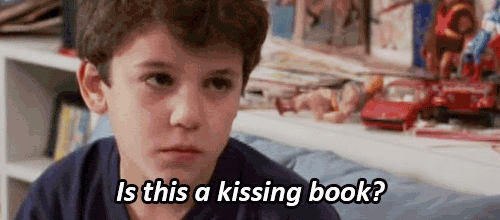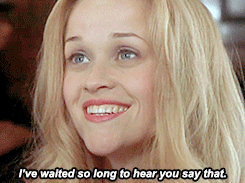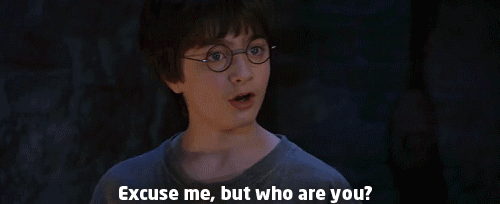From Pitch to Slam: Part 1, The 35-Word Pitch
I’m a twitter contest junkie. A downright “women of ill repute” when it comes to this stuff, and one of my favorites is right around the bend!
If you’re not familiar with Pitch Slam, here’s a short rundown:
It’s put together by L.L. McKinney, and the contest consists of submitting the first 250 words of your MS along with a 35-word pitch. There’s things about feedback rounds and being selected for your stuff to appear on a blog where agents can request (*squeal*) but I’m gonna leave all those details to the Queen to explain and answer when it comes time. Apart from, of course, where my own experience comes into play ;)
I entered Pitch Slam twice: Once in April 2015 for my Adult Romance, Auto In, and once in October 2015 for my Adult Contemporary Romance, Hands-Free. I made it to the final blog round both times (where agents have the opportunity to make requests). And just so you know Pitch Slam people aren’t paying me off in Rolos to talk them up, know that while I earned requests, neither contest concluded with my signing with an agent. However, I absolutely feel that the things I learned from participating in Pitch Slam are what helped me accomplish that goal.
So without further ado (and lots of my embarrassment to come) let’s talk about what you need for Pitch Slam and how to make it sing!
PART 1: 35-WORD PITCH
Yep, you read that right. Thirty-five measly words to describe your book in a hooky fashion and get the attention of mentors, judges, and eventually, agents.

It sounds so simple. You wrote a whole book, 35 words should be nothin’! Well, sure. And you could just jot down any old thing, but you wouldn’t send out a query letter you winged at the last minute, right? Well here's the funny little secret about this: The pitch needs all the same things as a query letter—just about a billion times faster, so think of it as a Query on a serious, serious diet.
Speaking of those elusive "things" you need, what are they?
Character. Conflict. Stakes.
That’s it. I usually set up my pitches in that order, too (unless I’m twitter pitching, which is a whole other ballgame that we can talk about another time.)
1. I start with an intro (name, possibly age)
2. Try to incorporate a sense of character while describing the plot.
3. Then hard shift into the conflict, and finish with your stakes (what they have to lose.)
CHARACTER lives like THIS until THIS happens, and then [has to figure out BLANK/ has to decide versus RESOLUTION A OR RESOLUTION B/has to save BLANK before THIS HAPPENS]
That, ladies and gentleman, is my barest, barest minimum of how to do this. There are LOTS of options here on how to set up your pitch to fill in the blanks, so just find and use whatever is true to your story. And actually, now that I think about it...

A quick word about stakes (whether it's a pitch or a query or wherever): specificity may be a hard word to spell but you need to worship it like chocolate
“A surprise will test their love and they might not be able to recover from it.” – said every romance book, ever.
“She will have to fight against the forces of darkness to save the ones she loves.” – true for Ripley (Sigourney Weaver) in Alien, Elizabeth Bennet in Pride, Prejudice and Zombies, Hermione in Harry Potter, and Princess Buttercup from the Princess Bride. Oh and like, all Disney movies.
See the problem? It’s the same for everyone, in one way or another. So make sure to add details that pertain specifically to your character and book so it can’t be confused with anyone else’s.

For example purposes, here was my initial 35-word pitch for Auto In (keep in mind, this is pre feedback):
A southern Don Jon, twenty-three-year-old Dante drives as fast as he’ll hop into bed with a Pick-Me-Up Princess. But to date his modest coworker, he’ll have to expose the heart behind his bad boy reputation.
And here is the feedback I received from the Pitch Slam mentors:

See how they all said it needed to be more specific? Higher stakes! More conflict! As for the Don Juan correction, I actually did mean Don Jon, which is a movie starring Joseph Gordon-Levitt.

(god, he's gorgeous)
So if you use comps in your pitch (although, when you only have 35 words, using any of them for a comp is a pretty big space eater), take care that they’re not too obscure to recognize *cough cough*
Okay one more of Jo-GO as Don Jon

um, yum.
My final pitch for Auto In:
Twenty-three-year-old Dante drives as fast as he’ll hop into bed with a Pick-Me-Up Princess. But it’ll take exposing the heart behind his bad boy reputation to contend with the buried spouse of his long-coveted coworker.
As well, here was my pitch for Hands-Free:
Happily deaf, Eve thrives on her freedom to rock climb and BASE jump. But when an unexpected love dives the adrenaline-junkie toward marriage, the scariest risk is whether to take her vows, despite his vasectomy.
So remember, it’s basically a Query letter crammed into skinny jeans: Character, Conflict, Stakes. And be as specific as possible!
So that's it for Part 1, and in the next post, I'll have lots more embarrassing examples for you guys to laugh at. Here's a sneak preview of:
PART 2: THE FIRST 250
So . . . What’s the deal with the first 250 words? IT’S NOT ENOUGH TO JUDGE ME!!!

I know it’s tough – you have an entire book full of wisdom and metaphors and themes and plot and maybe some rockets or a lot of good kissing, and the first 250 words of that 100k is just NOT ENOUGH to get a sense of how AMAAAAAAZING your book is, right? Um, actually, it is. And here’s why...
I hope you enjoyed, and in the meantime, may your pitches be poised and poignant, and your first 250s shine like glitter. Until next time, Happy Reading!
Xoxo
Katie













